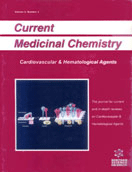Abstract
Food proteins can be a source of various bioactive peptides including such possessing anti-hypertensive activity. While most orally active anti-hypertensive peptides derived from food proteins inhibit the angiotensin Iconverting enzyme (ACE), ovokinin (2-7) (RADHPF), a peptide isolated from a chymotryptic digest of ovalbumin, has been shown to induce nitric oxide-dependent vasorelaxation in an isolated mesenteric artery as well as anti-hypertensive effect after oral administration in spontaneously hypertensive rats (SHRs). Rational amino acid replacement lead to the ovokinin (2-7) analog, RPLKPW, which had the highest anti-hypertensive activity among the tested peptides. Furthermore, oral administration (0.1 mg / kg) of the peptide lowered the blood pressure of SHR but not of normotensive Wistar-Kyoto (WKY) rats. In order to develop a novel use of this potent anti-hypertensive peptide for prevention of hypertension, RPLKPW has been genetically introduced into the homologous sequences in soybean β-conglycinin α subunit by site-directed mutagenesis. The recombinant RPLKPW-incorporated α subunit expressed in E. coli has been shown to exert anti-hypertensive activity after oral administration in SHR. Thus, RPLKPW-incorporated α subunit is the first example of a genetically modified food protein possessing physiological activity based on a bioactive peptide.
Keywords: ovalbumin, ovokinin, vasorelaxation, anti-hypertensive peptide, peptide design, soybean, genetically modified (gm) food, spontaneously hypertensive rat (shr)
 2
2













